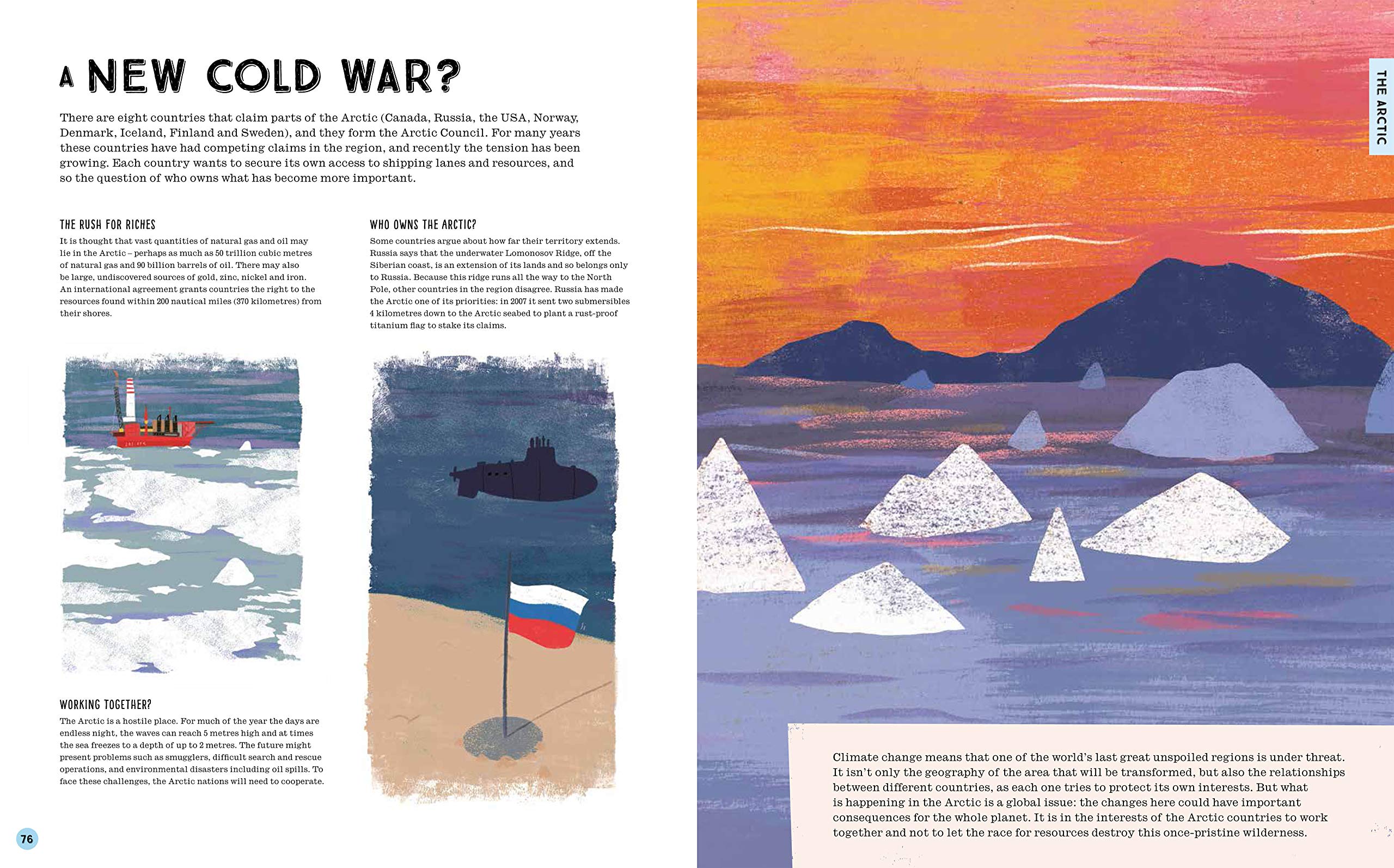

Human figures are rare, generic, and used largely as decorative elements. Some visuals, such as an outline of Africa with silhouettes of the U.S., China, and several other large countries fitted within like pieces of a jigsaw puzzle, will make a larger impression on young viewers than, for instance, a schematic map of Europe festooned with pie charts showing the percentage of natural gas select countries import from Russia.

The maps themselves, many designed to demonstrate a specific point, are a patchy mix of single countries, whole continents, and general regions like Latin America (depicted as Mexico to Cape Horn). The point, for instance, that ignoring natural borders to lay out arbitrarily drawn ones (like those created in the Middle East after World War I) inevitably leads to long-term states of conflict is convincingly made. Readers will find both broad-brush accounts of historical incidents and themes and closer looks at cases in point. It’s all designed to highlight the roles geophysical features, or the lack thereof, have played in shaping trade and politics. 2021) have been transformed into a dozen large infographic maps with follow-up commentary. Marshall’s fat Prisoners of Geography (2015) and select chapters (on Australia and Canada) from his upcoming Power of Geography (Nov.

Condensed from an adult series, a big-picture overview of how geography has influenced the development of modern nations and international trade.


 0 kommentar(er)
0 kommentar(er)
